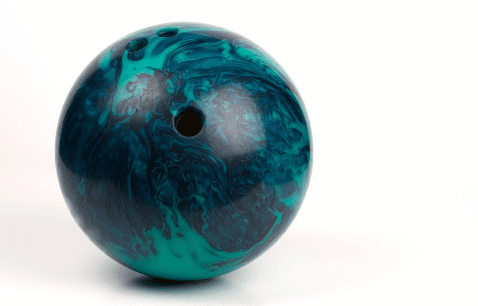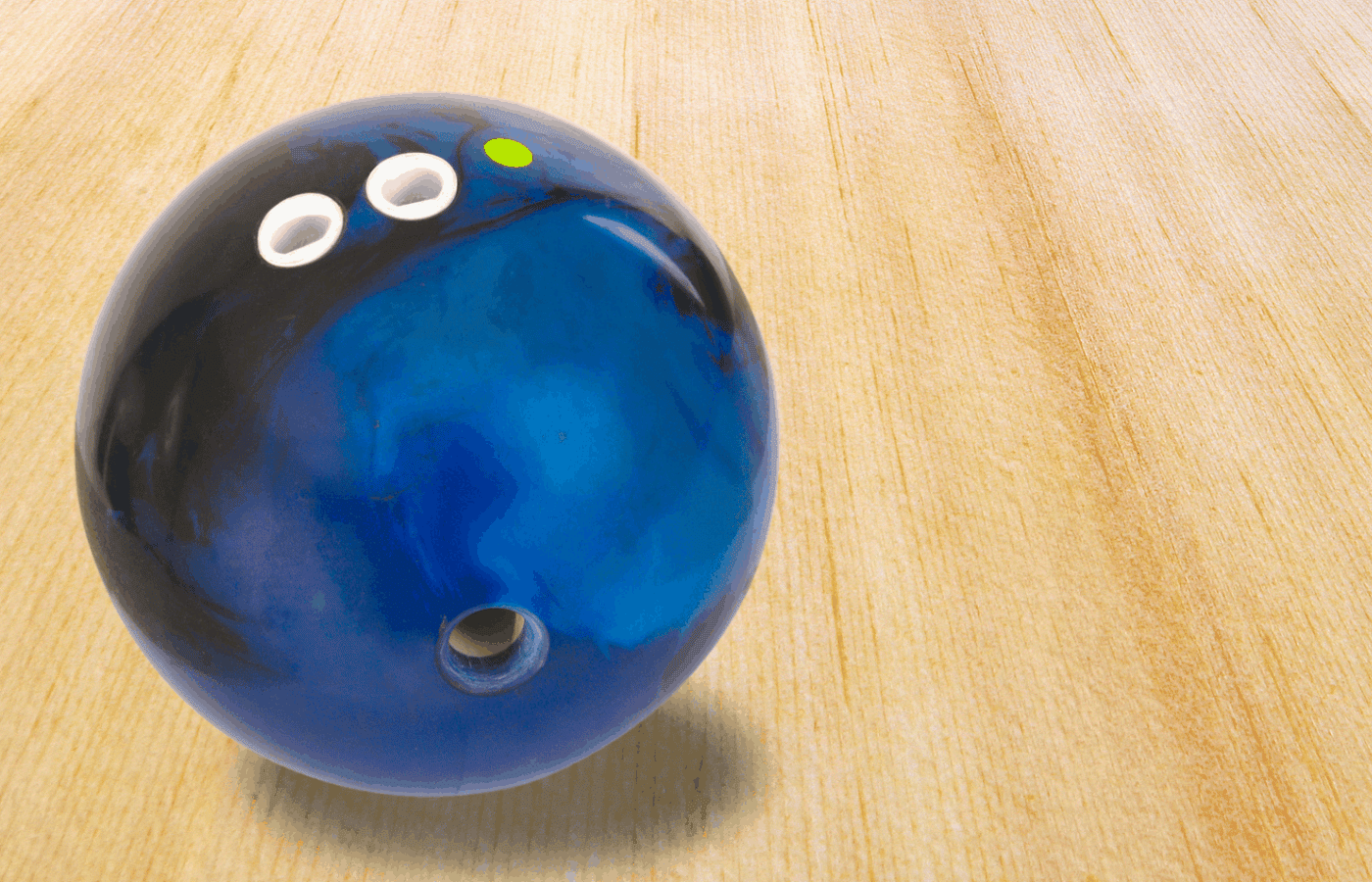Most everyone knows what bowling is and can understand its appeal as a popular indoor recreational sport. You only need two essential things to enjoy a game of bowling – bowling shoes and a bowling ball.
Bowling alleys have shoes to rent and balls to borrow, but if you plan to play frequently, there are several reasons it makes sense to buy your own bowling ball.
If you’re worried about the investment or wondering how often you should replace a bowling ball, fear not. A good bowling ball, when maintained properly, can last anywhere from 5 years, all the way up to 10 years.
How Do You Know It’s Time to Replace Your Bowling Ball?
Most bowling balls, when properly cared for, will last a solid 5-10 years. Maintenance is key. The better you take care of your bowling ball, the longer it will last. But the frequency of use comes into play, too.
Some bowlers might use their balls several times a week, while other ball owners might bowl only a few times a year. So it’s logical that the more heavily you use your bowling ball, the more likely it is to wear out sooner.
If you notice that you’re not hooking the ball quite as well as you did, your ball may be wearing down. If your ball makes a rattling sound when it hits the floor or sounds hollow when it strikes the pins, you might be ready to consider replacing your bowling ball.
How to Maintain Your Bowling Ball

Taking care of your bowling ball isn’t difficult, but it does require timeliness and consistency.
The coverstock of your bowling ball will absorb some oil and dirt from the lanes. Sometimes you’ll even notice a ring of oil around your ball after a shot. This is referred to as an oil track, and your ball will last longer and perform better if you clean this off right away rather than allowing it to set in.
Using a microfiber cloth, wipe down your bowling ball between shots, then give it a more thorough cleaning after you’re finished bowling and before you pack away your ball in your bag.
You can use special commercial cleaners customized for cleaning bowling balls or make a home-made cleaner using equal parts of rubbing alcohol, water, and a cleaning solution like Simple Green.
We recommend using this bowling ball cleaner kit by Lane Ghost. It will efficiently remove oil buildup, dirt, dust, and belt marks from your bowling ball while restoring its natural tack.
After cleaning your ball, wipe it dry before putting it away. This care routine will slow your ball’s aging and allow you to get lots of use from your ball.
Routine Maintenance Delays Replacement
Consistently wiping down your ball between shots and making sure to clean it properly before putting it back in your bowling ball bag will go a long way in delaying replacing it. While most balls last 5-10 years, how often you play and how well you care for your ball factor into the equation.
If your performance declines, particularly in how well you hook the ball, it might be time to replace it. If you hear rattling sounds or a hollow sound, it might be time to replace your bowling ball.
Fortunately, you’ll be able to enjoy your ball for hundreds of games and several years before you wear your ball out and have to worry about replacement.
Should You Own Your Own Bowling Ball?
There are many reasons you should have your own bowling ball. The first is protection. You might end up with a ball too heavy for you or with finger holes too tight or too loose if the bowling alley’s selection is limited. An improper fit in weight or finger hole size could cause problems with your back, knee, elbow, wrist, or fingers.
Another reason for using a ball of your own is performance. The consistency of using the same ball every time you bowl will help you develop habits and routines to improve your game. Having a ball with the proper weight and right-sized finger holes will allow you to smoothly release the ball and strike the pins effectively, improving your performance.
Some people are more motivated by the cleanliness of not having to rely on borrowed balls. Sharing a ball means exposure to germs, as you’re sticking your fingers in the same holes that others are using and countless others have used before you.
Others cite convenience as the reason they prefer not sharing. Searching the racks at your local bowling alley for a ball that is just right for you can take time and be frustrating if the selection is limited. Sharing a ball also means other bowlers could pick up your bowling ball by mistake during the game, slowing play while you wait for it to be returned.
How Do You Choose the Perfect Ball?
If you decide to purchase a bowling ball, you’ll want to think about the ball’s material, weight, and grip. The type of ball you buy, the material you choose, largely depends on your skill level, whether you hook the ball or throw it straight.
Beginner Bowler
Most first-time ball owners choose plastic or polyester bowling balls, especially if they are straight bowlers and don’t spin or curve the ball too much. Plastic or polyester balls skid well and maintain a straight trajectory.
Intermediate Bowler
Urethane balls are better choices for intermediate level bowlers. These balls have more friction against the lane’s surface so that the ball will hook more than a plastic ball. Resin, or reactive balls, are usually used by professional or competitive bowlers. They are the most versatile type of bowling balls and are for expert bowlers.
Once you’ve chosen the material that’s best for you, you’ll need to decide upon a weight. Generally, your bowling ball should be roughly 10 percent of your body weight up to 16 pounds, which is the heaviest bowling ball weight available.
Bowling Ball Grip
With the material and weight chosen, the next decision you’ll make will be about your ball’s grip. Most of the balls you borrow at the bowling alley have conventional grips, which means your thumb goes all the way into the thumbhole, and your other two fingers go in only to the second knuckle.
Fingertip grips are different in that the thumb goes all the way in like in a conventional grip, but you only insert your other two fingers to the first knuckle. The conventional grip is the more popular choice for most straight bowlers, while those learning to hook the ball prefer the fingertip grip.
Getting Holes Drilled
The final step in customizing your new bowling ball is getting the holes drilled. You’ll want to do this at the pro shop in your local bowling alley, so a professional can watch you bowl a few frames to evaluate your style.
Final Thoughts
With proper maintenance of care, a bowling bowl should last you at least 5 to 10 years. Although a bowling ball can last you a good while, it’s still good practice to replace a bowling ball when you feel that it just isn’t performing as it should.
To prevent performance loss from your bowling ball, always wipe off your ball after each game to help remove dirt, dust, and oil buildup.
Letting the oil sit on your bowling ball for prolonged periods of time can greatly contribute to premature bowling ball wear.


